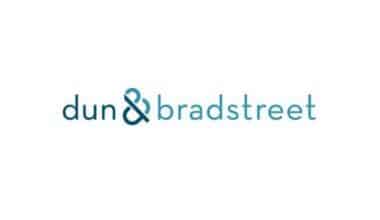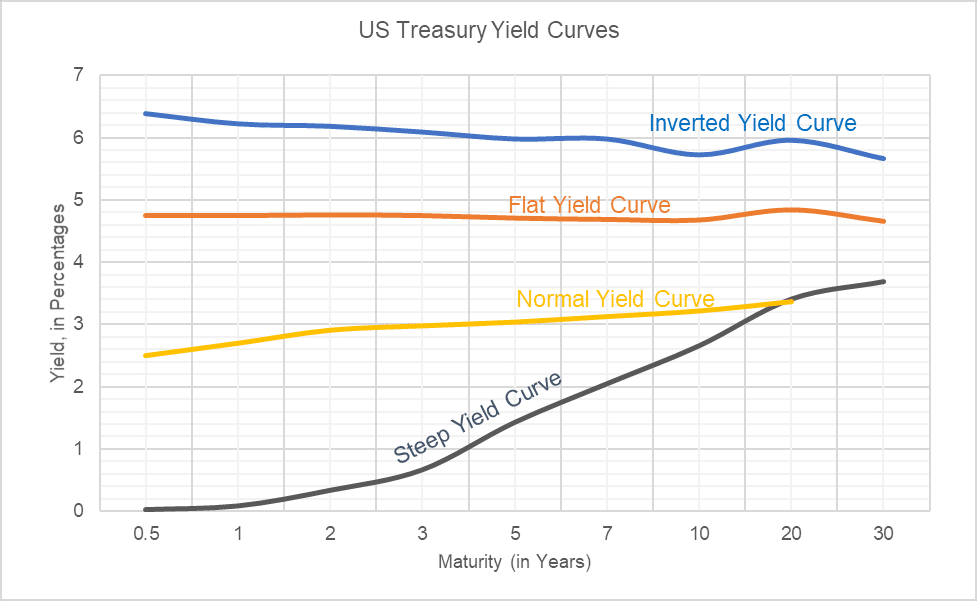Just opening a spam email can lead to more spam, and clicking a dangerous link or attachment might expose you to ransomware or other sorts of malware, such as the Emotet botnet, which spreads from inbox to inbox.
Continue reading to find out how to stop spam emails by modifying your privacy settings and taking into account your online behavior. We’ll walk you through the process of how to report and block spam, as well as teach you how to unsubscribe from undesired spam email campaigns.
What is Spam Email?
Spam email, also known as junk mail or spam mail, refers to unsolicited messages that are sent in bulk to a large number of email accounts. The majority of spam takes the form of relatively harmless emails from advertisers. Yet, spam is a low-risk, high-reward strategy for scammers to launch phishing attacks.
Typical Types of Spam Email
#1. Advertisements for commercial products
Whether an email message is a spam or a genuine advertisement, it is subject to the CAN-SPAM statute in the United States.
When businesses get your email address, they frequently automatically subscribe you to their newsletter as a low-cost approach to market their items. Look for an option to opt-in or out of marketing emails whenever you fill out an online form. While these emails can be annoying, the vast majority are harmless, and by law, they must include a clear opt-out or unsubscribe option.
If you unsubscribe but still receive spam, change your email settings to keep messages from the sender’s address out of your inbox.
#2. Antivirus alerts
Antivirus alerts, ironically, are a typical spam strategy. These emails notify you of a computer virus infection and provide a solution—often an antivirus scan—to resolve the purported cyber threat. Taking the bait and clicking the link, on the other hand, may enable the hacker access to your system or download harmful software.
Do not click on a random email link if you fear your machine is infected. Instead, look for reliable cybersecurity software to secure your endpoints.
#3. Email forgery
Why are phishing email scams so prevalent? Because spam emails expertly replicate authentic company messages in order to entice you to act. A spammer chooses a firm brand that victims will recognize, such as a bank or an employer, and then utilizes the company’s same formatting and logos.
Check the From line before responding or clicking anything to ensure that the sender’s email address (not simply the alias) is valid. When in doubt, contact the company to confirm that the email is genuine.
#4. Winners of sweepstakes
Spammers frequently send emails claiming to have won a sweepstake or prize. They may ask you to visit a link or provide personal information in order for you to receive your prize. If you don’t recognize the competition or the email address appears shady, don’t click any links or respond with any personal information.
#5. Money swindles
Spammers, unfortunately, prey on people’s goodwill. A popular money scam starts with an email begging for assistance in difficult situations. The spammer makes up a story about how they need money for a family emergency or a horrible life event. Other frauds, such as the Nigerian prince scheme, promise money in exchange for your bank account details or a minor processing fee. Please exercise caution while disclosing personal information or transmitting money.
Why am I Receiving Spam Emails?
- Your email address was compromised as a result of a data breach.
- A sophisticated gadget harvested your email.
- Someone stole your email address from their contact list.
- Your email was generated at random.
- Your email address was sold by a shady company.
#1. Your email address was compromised as a result of a data breach.
This is the primary cause of spam email distribution, which occurs even in huge corporations such as Adobe, LinkedIn, and Last.FM. It poses a security risk because it contains names, passwords, and email addresses. Spammers utilize this information for illicit purposes, knowing that the vast majority of emails are active.
#2. A sophisticated gadget harvested your email.
If you have ever published your email address on the internet, spammers may steal it by crawling the internet for a @ symbol, which is commonly used at the beginning of an email domain, such as bob [email protected].
#3. Someone grabbed your email address from their contact list.
If spammers discover your friend’s email address and password, they will scan the contact list for fresh addresses and send more spam.
#4. Your email was generated at random.
Cybercriminals mix well-known user identities with well-known domain names such as @gmail.com or @yahoo.com. They send spam emails to all generated email accounts, and the fact that the email was sent and opened indicates that the email address is legitimate.
#5. Your email was sold by a shady company.
Some unscrupulous email marketers sell their mailing lists to spammers.
Phishing vs. Spam
Phishing is a more sophisticated form of spam email. Thieves pose as well-known firms with a good reputation in order to obtain sensitive information such as user names, passwords, credit cards, bank accounts, and so on. They frequently frighten or excite consumers, sending them to a false website where they defraud them.
However, spam is a mass email sent to a large number of individuals at once, usually in an attempt to promote dubious things such as revolutionary medicines, get-rich-quick schemes, and so on. It is not as sophisticated as phishing and does not necessitate strong technological expertise.
How To Stop Spam Emails
Nobody can completely stop spam emails. There are, however, precautions you can take to reduce the hazards that spam poses to your devices and personal data, as well as to prevent falling victim to online fraud.
#1. Make use of spam filters.
Most email services have spam filters in the form of a spam folder, although you may be able to alter filter settings to be more or less harsh. You can also construct your own inbox filters based on certain criteria and identify authorized senders who will not be blacklisted.
#2. Maintain the confidentiality of your email address.
According to Microsoft Security, security pros advise against putting your email address on forums, websites, or social media, where it can be “harvested” by spammers.
#3. Separate email accounts should be used.
Setting up separate personal email addresses or even a temporary “throwaway” email for certain types of online transactions is another technique to reduce spam. Even if your temporary account is compromised, you can create a new one. “Most email providers allow you to create a temporary email address, which aids in filtering,” explains Art Sturdevant, vice president of technical operations at Censys.
#4. Examine messages
Some spam emails reveal themselves. For example, an email may appear to be from PayPal, but holding your mouse cursor over the sender name may reveal a website address that isn’t from PayPal. Look for spelling and grammatical problems, which could indicate an attempt to avoid spam filters.
#5. Don’t reply to spam.
It is critical not to respond to spam messages. As Norton points out, responding lets the malicious actors know the account is active, perhaps opening the door to further unwelcome emails.
#6. Take caution when clicking the ‘unsubscribe’ button.
To reduce spam, simply unsubscribe if all emails originated from reliable sources. However, cybercriminals do not follow the same criteria and frequently use “spoofed” email addresses. Security experts advise that clicking the unsubscribe button may take you to a website that installs malware on your machine. It’s better to report spam by labeling it as such, which will assist train your email service’s algorithm.
How Can I Report Spam Emails?
You can manually delete garbage emails, but this will not prevent spammers from sending you additional unwelcome emails in the future. It also won’t protect you from viruses or other types of malware contained in unwanted emails; you’ll need a malware removal solution for that.
To properly block spam, you must report it. This allows your email client to learn which email addresses to block and how to filter spam more broadly.
Here’s how to report spam on Gmail, Apple Mail, Outlook, and Yahoo mail:
How To Report Spam On Gmail
To report spam on Gmail, you have to:
- Launch Gmail.
- To report spam emails, check the box to the left of each one.
- Then, on the mailbox toolbar, click the Report Spam button (the stop sign icon).
How to Report Spam Messages in Apple Mail
To report spam on Apple Mail, you have to:
- Launch Apple Mail.
- Click the Junk Mail button in the mailbox toolbar, then click the spam email you want to report.
How To Report Spam Email in Outlook
- Launch Outlook.
- Right-click the spam email you wish to report and select Report Spam.
- Go to Security settings and select Mark as garbage.
How to Report Spam Messages in Yahoo Mail
- Launch Yahoo Mail.
- Click the box to the left of each spam email that you want to report.
- Then, on the mailbox toolbar, click the Spam button.
After you’ve taught your email to recognize and stop spam, teach yourself how to recognize Amazon phishing emails and other types of spam on your own. Spammers may be aware of how to avoid being detected by spam email filters, but they may not be able to fool a skilled eye.
While filtering spam emails, you should block spam email addresses that are persistent, harmful, or false. Remember to report any internet scams you encounter, including Apple ID phishing schemes and other dangers.
How To Block Spam Email Addresses
Blocking undesired emails prevents spam from ever reaching that email address, but be careful how you do it because opening some spam emails can result in a flood of more junk emails from other spam accounts.
Here’s how to stop spam emails in Gmail, Apple Mail, Outlook, and Yahoo Mail:
How To You Block Spam Email Addresses In Gmail
To block spam on Gmail, you have to:
- Open Gmail and select the spam email whose sender you want to block.
- Select Filter messages like these by clicking the three vertical dots at the top of your inbox.
- To create a new Gmail filter for that address, click New filter.
- To confirm, select Remove it from the list of actions and click Create filter again.
How to Block Spam Emails in AppleMail
To block spam on Apple Mail, you have to:
- Choose a message from the sender you want to ban in the Mail App.
- Click the arrow next to the sender’s name in the message header and select Block Contact.
How To Block Spam Email Addresses In Outlook,?
- Right-click the email address you wish to ban in Outlook and select Block.
- Go down to Security Settings, then click Block Sender.
How to Block Spam Email Addresses in Yahoo Mail
- Open Yahoo Mail and check the box to the left of the email from which you wish to block the sender.
- Choose Block senders by clicking the three horizontal dots in the mailbox toolbar.
Is There a Spam Law?
Spamming attitudes change from country to country. Let’s take a look at the most popular anti-spam legislation introduced per country:
- The CAN-SPAM Act of the United States
- The Privacy and Electronic Communications Rules of the United Kingdom
- Anti-Spam Legislation in Canada
- The Spam Act of 2003 in Australia
- European Union Directive on Privacy and Electronic Communications
What Obligations Does the Law Place on Legitimate Email Senders?
The CAN-SPAM act, for example, requires businesses to utilize opt-in to add users, include a visible and functional opt-out mechanism in each email, use subject lines relevant to the content of the email, and display a valid physical address of the sender’s organization.
Notwithstanding current anti-spam regulations, the United States leads the world in the number of spam email operations. According to Statista, more than 30% of spam originates in the United States or China.
How Can I Prevent My Emails From Being Labeled as Spam?
- Maintain your sender’s reputation.
- Employ appropriate authentication tools.
- Examine your emails for spam.
- Strive for a high open rate.
- Provide pertinent content for opt-in users
- Make use of a reputable bulk email service.
If you send out bulk emails to advertise your business, the spam box is the worst location for your emails to wind up. To avoid spam filters, follow these best practices:
#1. Maintain your sender’s reputation.
A sender’s reputation is a score that is assigned to them based on the quality of their email campaigns, regularity, volume, and user involvement. Sending too many or too frequent emails sends a bad signal to ESP filters, and your future emails will be labeled spam.
#2. Employ appropriate authentication tools.
Check that the bulk email provider you’re using passes DKIM and SPF authentication. SendPulse provides users with a dependable SMTP server, guaranteeing that your emails get into the inboxes of your subscribers.
#3. Examine your emails for spam.
Utilize email spam checkers — tools that allow you to predict how popular ESPs will react to your email, obtain feedback on it, and make modifications before sending it.
#4. Focus on increasing your open rate.
The subject line mostly determines the open rate, so make it engaging, exciting, and, most importantly, related to the email’s content. Email campaigns with a high open rate suggest that your subscribers enjoy your communications, ensuring strong email deliverability.
#5. Create content that is relevant.
Personalization and segmentation are used to send relevant newsletters and promotions. Split your audience into groups that share characteristics such as age, gender, and region.
#6. Add additional value to your emails for users who have opted in.
The law compels you to send emails only to people who have willingly given you their email addresses. Employ a double opt-in strategy to ensure that your readers are interested and will not mark your email as spam.
#7. Make use of a reputable bulk email service.
Typically, when sending bulk emails with your servers, you must manage the infrastructure and reputation of your server. This grunt work is taken care of by a bulk email service. SendPulse certainly does!
Conclusion
Thus far, there is no such thing as a spam “do not email” list. Until then, you’ll have to deal with spam on your own.
Fortunately, there are excellent tools available to assist you. Most email applications contain spam filters, which can aid in the detection and isolation of spam. Spam is often filtered out by internet service providers, so it never reaches your computer. Nonetheless, it is prudent to install and use anti-virus security software that can remove infections that may already be present on your computer.
If spam manages to get past these safeguards, take the easiest approach to suspicious emails and click Delete.
Related Articles
- TEXTING SPAM: Meaning, Examples & How to Stop It
- EMAIL PROTECTION: Why Is It Important
- The Top 11+SMALL BUSINESS EMAIL HOSTING Services & Reviews
- YAHOO LOGO: Meaning, Why Yahoo Changed Their Logo and History
- Yahoo Finance: News, Net worth, how they started, and API Guide






